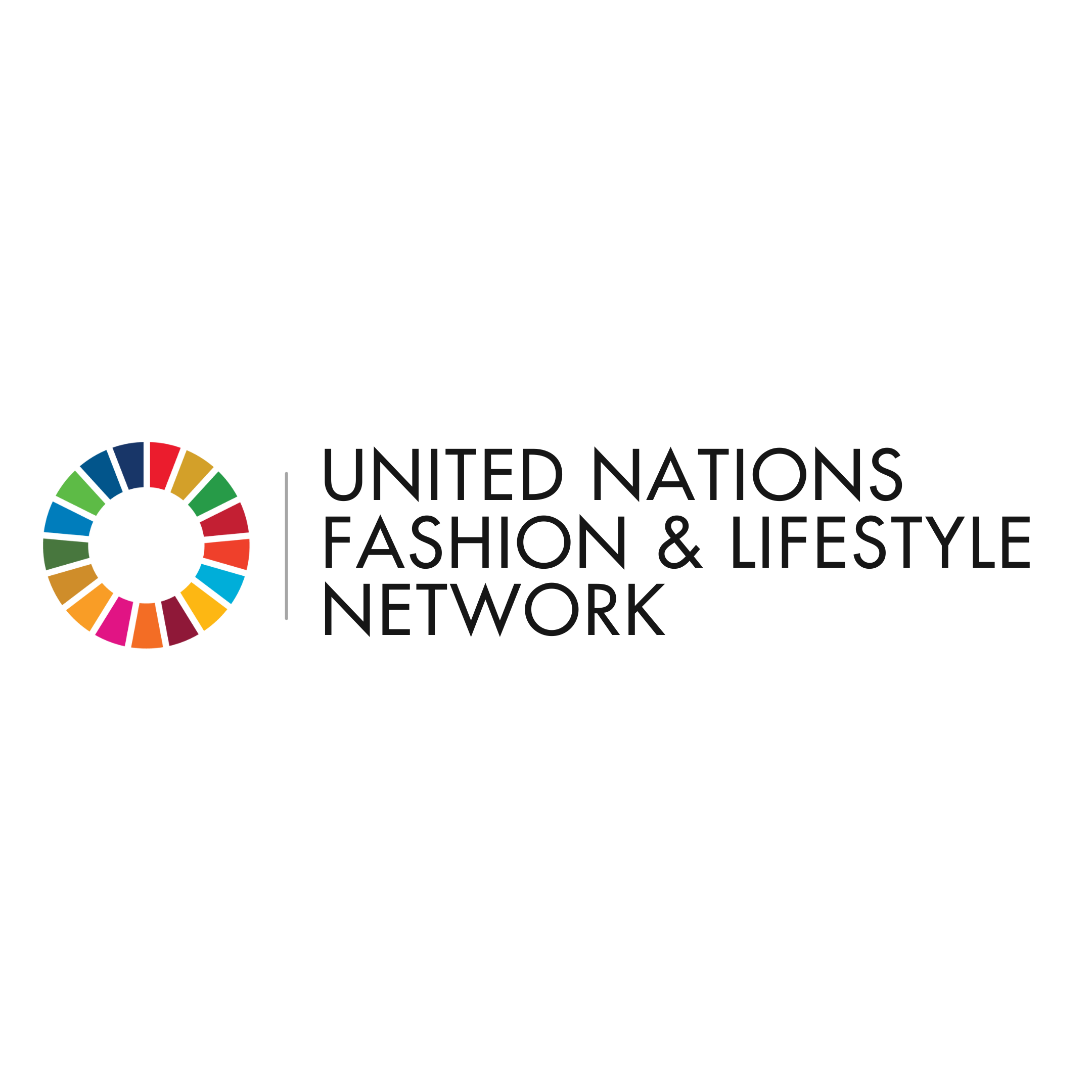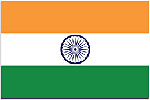What A Lily
What A Lily
(
Partnership
)
#SDGAction57511
Description
We are a slow fashion, made-to-order brand committed to sustainability, ethical production, and zero waste. By producing only what is needed, we minimize waste and avoid overproduction. We use sustainable fabrics and creatively repurpose leftover materials into smaller products like headbands, scrunchies, and table napkins, striving for a zero-waste production model. At the heart of our brand is our collaboration with Indigenous communities, most of which are women. We ensure that artisans receive fair wages and work in conditions that uphold dignity, safety, and economic empowerment. We aim to create a long-term positive impact by fostering self-confidence and financial independence. Our mission is to bridge heritage craftsmanship with contemporary, ethical fashion, ensuring that sustainability, community empowerment, and fair labour practices remain at the core of our brand.
Our initiative is implemented through a structured, hands-on approach that involves direct engagement with artisans, ethical production planning, and continuous improvement. The key steps include:
1. Community Engagement & Research:
• We identify artisan communities skilled in traditional crafts and initiate partnerships based on shared values of sustainability and ethical craftsmanship.
• As a team we travel to their villages, staying for up to a month to build relationships, observe their craft, and understand their challenges and aspirations.
2. Skill Development & Ethical Production:
• We conduct on-site training to refine techniques, improve product quality, and introduce sustainable practices while respecting traditional methods.
• We ensure fair wages and create an ethical working environment by eliminating middlemen and working directly with artisans.
3. Production & Sustainability Measures:
• We follow a made-to-order production model to prevent waste and overproduction.
• Leftover fabric is repurposed into smaller products like scrunchies, headbands, and table napkins to achieve a zero-waste approach.
4. Regular Monitoring & Support:
• We conduct periodic check-ins and in-person visits to ensure fair working conditions and sustainable production practices.
5. Continuous Improvement & Expansion:
• We gather feedback from artisans and customers to refine our processes.
• As we scale, we aim to expand our network of artisans, bringing more rural communities into the sustainable fashion ecosystem. By following this methodology, we ensure that our initiative remains ethical, sustainable, and deeply connected to the artisans we work with while promoting long-term positive change.
Our approach to capacity building focuses on long-term skill development, knowledge sharing, and resource accessibility to ensure artisans can sustain and grow their craft independently as well.
1. Deep Immersion & Practical Learning:
• Instead of one-time training sessions, we stay with artisans for extended periods to provide continuous mentorship and real-time problem-solving.
• We emphasize hands-on learning rather than theoretical instruction, allowing artisans to integrate new methods gradually.
2. Strengthening Traditional Skills with Market-Driven Knowledge:
• While preserving indigenous techniques, we guide artisans on modern applications of their craft to align with contemporary design trends and market demands.
• We facilitate knowledge-sharing sessions where artisans can collaborate and learn from each other, fostering innovation within their communities.
3. Resource Accessibility & Infrastructure Support:
• We help artisans gain access to better raw materials, eco-friendly alternatives, and improved tools to enhance efficiency without compromising traditional craftsmanship.
4. Introducing Sustainable Business Models:
• We guide artisans in setting up cooperative models or direct trade systems, reducing dependency on middlemen.
• Artisans are introduced to ethical pricing structures and fair trade networks, ensuring financial sustainability.
5. Long-Term Engagement & Follow-Ups:
• We conduct regular post-training assessments to measure progress and provide additional support.
• Artisans who show leadership potential are encouraged to become trainers within their communities, creating a self-sustaining cycle of knowledge transfer. This holistic and ongoing approach ensures that artisans are not only trained but also empowered to sustain and expand their craft independently while maintaining cultural integrity.
Our initiatives are governed through a hands-on approach, maintaining a thorough check on our production process to ensure ethical and sustainable practices. We conduct regular assessments and in-person meet-ups with artisans and communities to understand their challenges and provide better support. Through direct engagement and training, we work closely with artisans, spending time with them to refine skills, improve working conditions, and co-create solutions that uplift their livelihoods. This ensures that our approach remains responsive, ethical, and aligned with our commitment to sustainability and fair labour.
To ensure that our initiative is creating tangible and long-term change, we conduct structured impact assessments focusing on artisan well-being, sustainability goals, and business growth. Our approach includes:
1. Economic Impact Evaluation:
• We assess financial stability, ensuring artisans receive consistent and fair payments without dependence on exploitative middlemen.
2. Workplace & Well-Being Assessments:
• Regular surveys and one-on-one discussions help us gauge artisans’ satisfaction, working conditions, and overall well-being.
• We monitor workplace improvements, including safer environments and access to essential resources like proper lighting, ventilation, and ergonomic tools.
3. Sustainability & Zero-Waste Tracking:
• We measure how much fabric waste is reduced by tracking the volume of materials repurposed into smaller products.
• We assess the efficiency of sustainable production methods, ensuring minimal environmental impact while maintaining craftsmanship quality.
4. Skill Development & Self-Sufficiency Metrics:
• We evaluate artisans’ ability to work independently and apply newly learned techniques after training.
• We track entrepreneurial growth, assessing whether artisans start their ventures or take leadership roles within their communities.
5. Market & Consumer Impact Analysis:
• We monitor customer feedback on artisan-made products, ensuring they meet ethical fashion standards and consumer expectations.
6. Long-Term Social & Cultural Preservation:
• We assess how well artisans can preserve and pass on their traditional skills to the next generation.
• We track community involvement, ensuring that more artisans, especially women, are empowered through our initiative. Through these assessments, we ensure that our work is not just impactful in the short term but contributes to sustainable livelihoods, ethical production, and cultural preservation over time.
Artisan Clusters in Jaipur, Northeast India and Himachal Pradesh for embroidery, hand printing, stitching and making craft-based products.
SDGS & Targets
Goal 5
Achieve gender equality and empower all women and girls
5.1
End all forms of discrimination against all women and girls everywhere
5.1.1
Whether or not legal frameworks are in place to promote, enforce and monitor equality and non‑discrimination on the basis of sex
5.2
5.2.1
Proportion of ever-partnered women and girls aged 15 years and older subjected to physical, sexual or psychological violence by a current or former intimate partner in the previous 12 months, by form of violence and by age
5.2.2
Proportion of women and girls aged 15 years and older subjected to sexual violence by persons other than an intimate partner in the previous 12 months, by age and place of occurrence
5.3
5.3.1
Proportion of women aged 20-24 years who were married or in a union before age 15 and before age 18
5.3.2
Proportion of girls and women aged 15-49 years who have undergone female genital mutilation/cutting, by age
5.4
Recognize and value unpaid care and domestic work through the provision of public services, infrastructure and social protection policies and the promotion of shared responsibility within the household and the family as nationally appropriate
5.4.1
Proportion of time spent on unpaid domestic and care work, by sex, age and location
5.5
Ensure women’s full and effective participation and equal opportunities for leadership at all levels of decision-making in political, economic and public life
5.5.1
Proportion of seats held by women in (a) national parliaments and (b) local governments
5.5.2
Proportion of women in managerial positions
5.6
Ensure universal access to sexual and reproductive health and reproductive rights as agreed in accordance with the Programme of Action of the International Conference on Population and Development and the Beijing Platform for Action and the outcome documents of their review conferences
5.6.1
Proportion of women aged 15-49 years who make their own informed decisions regarding sexual relations, contraceptive use and reproductive health care
5.6.2
Number of countries with laws and regulations that guarantee full and equal access to women and men aged 15 years and older to sexual and reproductive health care, information and education
5.a
Undertake reforms to give women equal rights to economic resources, as well as access to ownership and control over land and other forms of property, financial services, inheritance and natural resources, in accordance with national laws
5.a.1
(a) Proportion of total agricultural population with ownership or secure rights over agricultural land, by sex; and (b) share of women among owners or rights-bearers of agricultural land, by type of tenure
5.a.2
Proportion of countries where the legal framework (including customary law) guarantees women’s equal rights to land ownership and/or control
5.b
5.b.1
Proportion of individuals who own a mobile telephone, by sex
5.c
Adopt and strengthen sound policies and enforceable legislation for the promotion of gender equality and the empowerment of all women and girls at all levels
5.c.1
Proportion of countries with systems to track and make public allocations for gender equality and women’s empowerment
Goal 8
Promote sustained, inclusive and sustainable economic growth, full and productive employment and decent work for all
8.1
8.1.1
Annual growth rate of real GDP per capita
8.2
Achieve higher levels of economic productivity through diversification, technological upgrading and innovation, including through a focus on high-value added and labour-intensive sectors
8.2.1
Annual growth rate of real GDP per employed person
8.3
Promote development-oriented policies that support productive activities, decent job creation, entrepreneurship, creativity and innovation, and encourage the formalization and growth of micro-, small- and medium-sized enterprises, including through access to financial services
8.3.1
Proportion of informal employment in total employment, by sector and sex
8.4
Improve progressively, through 2030, global resource efficiency in consumption and production and endeavour to decouple economic growth from environmental degradation, in accordance with the 10-Year Framework of Programmes on Sustainable Consumption and Production, with developed countries taking the lead
8.4.1
Material footprint, material footprint per capita, and material footprint per GDP
8.4.2
Domestic material consumption, domestic material consumption per capita, and domestic material consumption per GDP
8.5
8.5.1
Average hourly earnings of female and male employees, by occupation, age and persons with disabilities
8.5.2
Unemployment rate, by sex, age and persons with disabilities
8.6
8.6.1
Proportion of youth (aged 15-24 years) not in education, employment or training
8.7
Take immediate and effective measures to eradicate forced labour, end modern slavery and human trafficking and secure the prohibition and elimination of the worst forms of child labour, including recruitment and use of child soldiers, and by 2025 end child labour in all its forms
8.7.1
Proportion and number of children aged 5‑17 years engaged in child labour, by sex and age
8.8
Protect labour rights and promote safe and secure working environments for all workers, including migrant workers, in particular women migrants, and those in precarious employment
8.8.1
Fatal and non-fatal occupational injuries per 100,000 workers, by sex and migrant status
8.8.2
Level of national compliance with labour rights (freedom of association and collective bargaining) based on International Labour Organization (ILO) textual sources and national legislation, by sex and migrant status
8.9
By 2030, devise and implement policies to promote sustainable tourism that creates jobs and promotes local culture and products
8.9.1
Tourism direct GDP as a proportion of total GDP and in growth rate
8.10
Strengthen the capacity of domestic financial institutions to encourage and expand access to banking, insurance and financial services for all
8.10.1
(a) Number of commercial bank branches per 100,000 adults and (b) number of automated teller machines (ATMs) per 100,000 adults
8.10.2
Proportion of adults (15 years and older) with an account at a bank or other financial institution or with a mobile-money-service provider
8.a
8.a.1
Aid for Trade commitments and disbursements
8.b
By 2020, develop and operationalize a global strategy for youth employment and implement the Global Jobs Pact of the International Labour Organization
8.b.1
Existence of a developed and operationalized national strategy for youth employment, as a distinct strategy or as part of a national employment strategy
Goal 9
Build resilient infrastructure, promote inclusive and sustainable industrialization and foster innovation
9.1
9.1.1
Proportion of the rural population who live within 2 km of an all-season road
9.1.2
Passenger and freight volumes, by mode of transport
9.2
Promote inclusive and sustainable industrialization and, by 2030, significantly raise industry’s share of employment and gross domestic product, in line with national circumstances, and double its share in least developed countries
9.2.1
Manufacturing value added as a proportion of GDP and per capita
9.2.2
Manufacturing employment as a proportion of total employment
9.3
9.3.1
Proportion of small-scale industries in total industry value added
9.3.2
Proportion of small-scale industries with a loan or line of credit
9.4
By 2030, upgrade infrastructure and retrofit industries to make them sustainable, with increased resource-use efficiency and greater adoption of clean and environmentally sound technologies and industrial processes, with all countries taking action in accordance with their respective capabilities
9.4.1
CO2 emission per unit of value added
9.5
9.5.1
Research and development expenditure as a proportion of GDP
9.5.2
Researchers (in full-time equivalent) per million inhabitants
9.a
9.a.1
Total official international support (official development assistance plus other official flows) to infrastructure
9.b
9.b.1
Proportion of medium and high-tech industry value added in total value added
9.c
Significantly increase access to information and communications technology and strive to provide universal and affordable access to the Internet in least developed countries by 2020
9.c.1
Proportion of population covered by a mobile network, by technology
Goal 10
Reduce inequality within and among countries
10.1
By 2030, progressively achieve and sustain income growth of the bottom 40 per cent of the population at a rate higher than the national average
10.1.1
Growth rates of household expenditure or income per capita among the bottom 40 per cent of the population and the total population
10.2
By 2030, empower and promote the social, economic and political inclusion of all, irrespective of age, sex, disability, race, ethnicity, origin, religion or economic or other status
10.2.1
Proportion of people living below 50 per cent of median income, by sex, age and persons with disabilities
10.3
Ensure equal opportunity and reduce inequalities of outcome, including by eliminating discriminatory laws, policies and practices and promoting appropriate legislation, policies and action in this regard
10.3.1
Proportion of population reporting having personally felt discriminated against or harassed within the previous 12 months on the basis of a ground of discrimination prohibited under international human rights law
10.4
Adopt policies, especially fiscal, wage and social protection policies, and progressively achieve greater equality
10.4.1
Labour share of GDP
10.4.2
Redistributive impact of fiscal policy
10.5
Improve the regulation and monitoring of global financial markets and institutions and strengthen the implementation of such regulations
10.5.1
Financial Soundness Indicators
10.6
10.6.1
Proportion of members and voting rights of developing countries in international organizations
10.7
Facilitate orderly, safe, regular and responsible migration and mobility of people, including through the implementation of planned and well-managed migration policies
10.7.1
Recruitment cost borne by employee as a proportion of montlhy income earned in country of destination
10.7.2
Number of countries with migration policies that facilitate orderly, safe, regular and responsible migration and mobility of people
10.7.3
Number of people who died or disappeared in the process of migration towards an international destination
10.7.4
Proportion of the population who are refugees, by country of origin
10.a
10.a.1
Proportion of tariff lines applied to imports from least developed countries and developing countries with zero-tariff
10.b
10.b.1
Total resource flows for development, by recipient and donor countries and type of flow (e.g. official development assistance, foreign direct investment and other flows)
10.c
By 2030, reduce to less than 3 per cent the transaction costs of migrant remittances and eliminate remittance corridors with costs higher than 5 per cent
10.c.1
Remittance costs as a proportion of the amount remitted
SDG 14 targets covered
| Name | Description |
|---|
Deliverables & Timeline
Fair Wage System for Artisans (Ongoing)
Sustainable, Zero-Waste Production Model (Ongoing)
Community Engagement & Artisan Support (Ongoing)
Women’s Economic Empowerment & Leadership Opportunities (Ongoing)
Resources mobilized
Partnership Progress

Feedback
Action Network

Timeline
Entity
Region
- Asia and Pacific
Geographical coverage
Other beneficiaries
Beneficiaries of the Project:
1. Indigenous Artisans & Craft Communities – Receive fair wages, skill development, and improved working conditions.
2. Women in Rural Areas – Gain economic independence, self-confidence, and leadership opportunities.
3. Local Communities & Families – Benefit from increased household income, better education, and improved living standards.
4. Sustainable Fashion Consumers – Access ethically made, high-quality products while supporting fair trade.
5. Ethical & Sustainable Fashion Ecosystem – Encourages industry-wide adoption of zero-waste and ethical production.
6. Future Generations of Artisans – Preserve traditional craftsmanship and gain access to modern market opportunities.
More information
Countries

Contact Information
Savy , Founder

